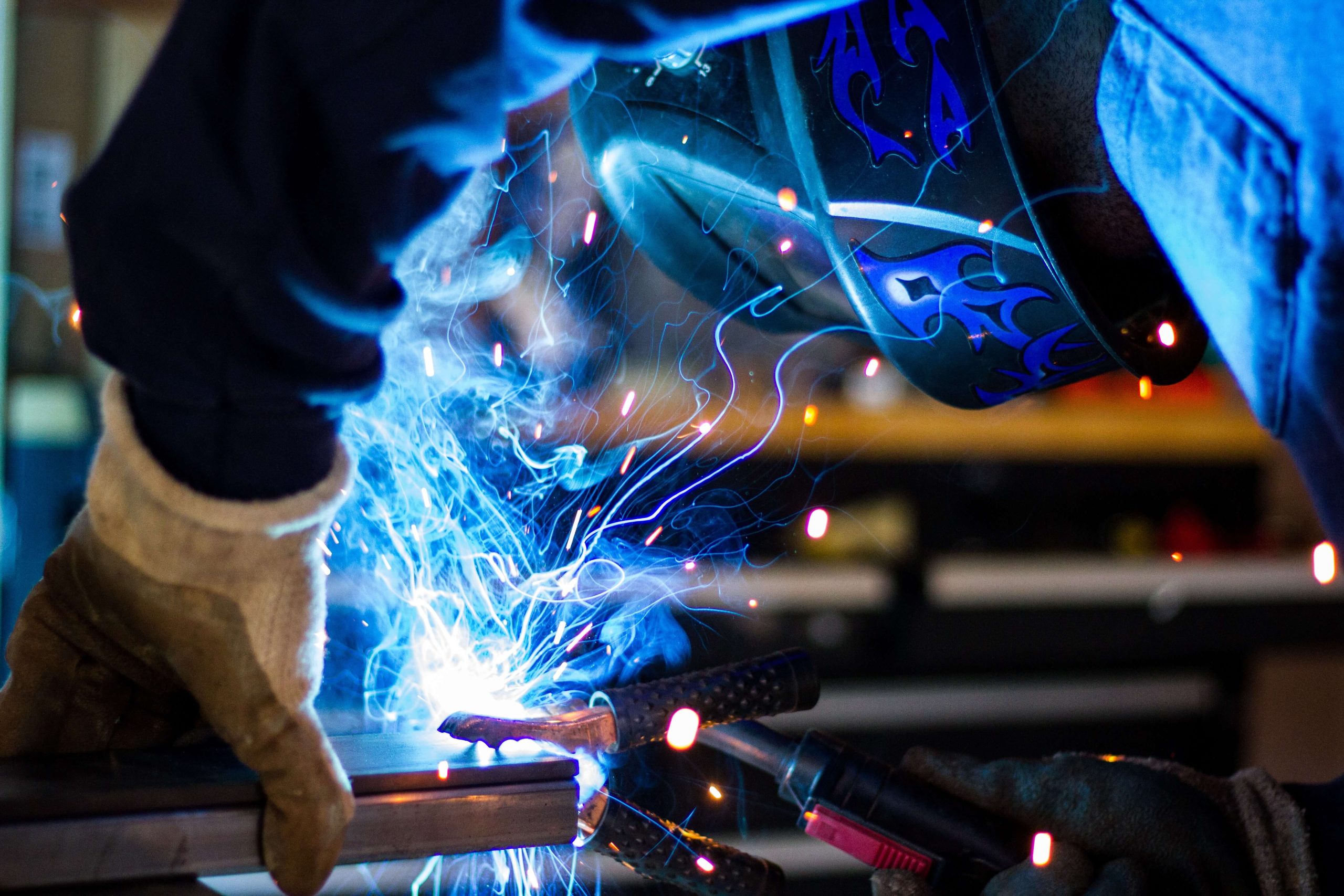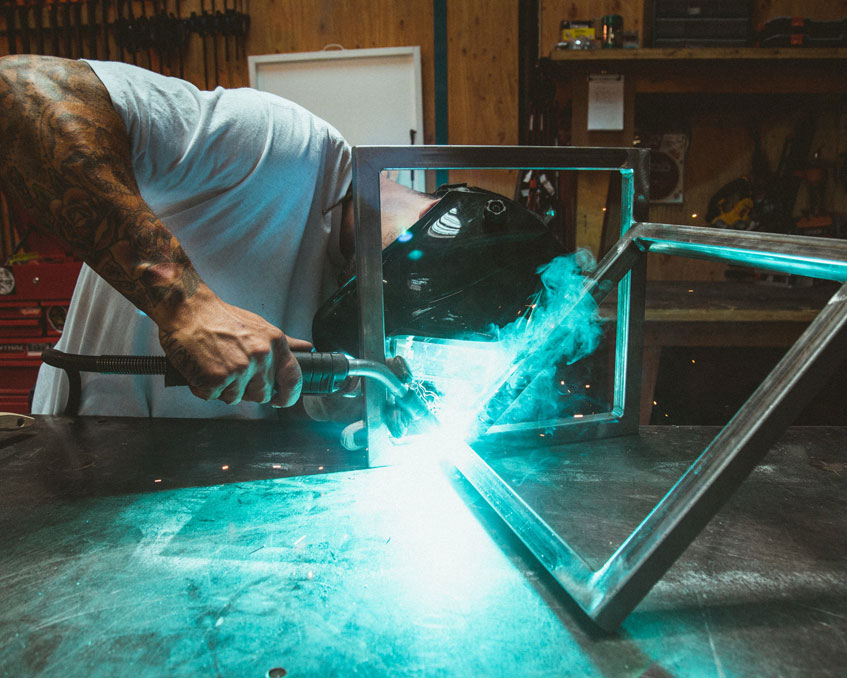Everything about Welding: Secret Insights Into Techniques and Finest Practices for Success
Welding includes a variety of techniques, each suited for particular materials and applications. Comprehending these methods, such as GMAW, SMAW, and TIG, is necessary for accomplishing suitable results. The ideal devices and security methods can not be neglected. As preparation and fixing play important functions in the welding process, mastering these components can substantially enhance the top quality of the end product. What are the vital factors that assure an effective weld?
Recognizing Different Welding Techniques
Welding methods encompass a selection of methods, each matched to details applications and products. Among the most common strategies are Gas Metal Arc Welding (GMAW), Secured Metal Arc Welding (SMAW), and Tungsten Inert Gas Welding (TIG) GMAW, likewise referred to as MIG welding, is prominent for its speed and convenience, making it excellent for thin materials. SMAW, or stick welding, is favored for its simpleness and effectiveness in exterior environments, specifically with thicker metals. TIG welding supplies precision and control, making it ideal for detailed work and non-ferrous steels (Welding). Each strategy has its special advantages and considerations, enabling welders to pick the finest approach based on the project's requirements, product kind, and wanted outcomes. Understanding these techniques is necessary for successful welding
Crucial Welding Tools and Tools
While different welding strategies require certain skills, the ideal equipment and tools are just as vital for accomplishing top quality outcomes. Vital welding tools consists of welding machines, which differ depending upon the method-- such as MIG, TIG, or stick welding. Protective gear, consisting of aprons, helmets, and gloves, assurances safety and comfort throughout the procedure. Furthermore, components and clamps assist protect products in location, making sure accuracy in welds. Consumables like welding poles, cord, and protecting gas are also critical components that influence the quality of the weld. Additionally, tools such as grinders and cutters help with surface area prep work and post-weld completing, contributing to a professional outcome. Spending in premium equipment inevitably improves the performance and performance of welding tasks.
Safety And Security Practices in Welding
Appropriate security practices are vital in the welding sector to protect employees from potential risks. Welders must put on ideal individual protective tools (PPE), including safety helmets with proper shading, handwear covers, and flame-resistant clothing. Ample ventilation is crucial to decrease direct exposure to damaging fumes and gases generated throughout the welding process. Additionally, employees need to be learnt the appropriate handling of welding devices to prevent mishaps. Fire precaution, such as keeping combustible products away from the welding location and having fire extinguishers readily offered, are required. Routine inspections of tools and work spaces can help determine prospective threats before they bring about accidents. By adhering to these safety methods, welders can develop a much safer working setting and decrease threats connected with their trade.
Readying Products for Welding
Preparing materials for welding is an important step that greatly affects the top quality and honesty of the end product (Montana Mobile Welding and Repair Fabrication). Proper prep work entails cleaning up the surface areas to remove pollutants such as dust, corrosion, and oil, which can endanger the weld. Methods such as grinding, sanding, or utilizing solvents are commonly utilized to attain a clean surface area. Furthermore, ensuring that the materials fit with each other well is necessary; voids can result in weak welds. It's also vital to take into consideration the placement and positioning of the elements, as this will certainly affect the simplicity of welding and the final outcome. Selecting the suitable filler product and guaranteeing compatibility with the base metals is essential for attaining solid, long lasting welds.
Tips for Getting High-Quality Welds
Achieving premium welds needs focus to detail and adherence to finest methods throughout the welding procedure. Correct joint prep work is crucial, guaranteeing surfaces are free and tidy from contaminants. Picking the ideal filler material and welding method based on the base steels is vital for optimal bonding. Keeping regular travel rate and angle while welding can advertise and avoid defects harmony. In addition, regulating heat input is crucial; extreme heat can result in bending and compromised joints. If necessary, on a regular basis evaluating the welds throughout the process enables for instant modifications. Utilizing appropriate post-weld therapies, such as cleansing and stress alleviation, can boost the longevity and honesty of the weld, ultimately making certain an effective result.
Troubleshooting Usual Welding Issues
Welding frequently offers challenges that can influence the high quality and integrity of the end product. Typical problems such as porosity, inconsistent weld grains, and getting too hot can arise, each requiring details fixing strategies. Comprehending these troubles is essential for welders to enhance their skills and attain perfect results.
Porosity Problems Discussed
Although porosity can frequently be forgotten, it continues to be an essential issue in welding that can endanger the honesty of an ended up product. Porosity describes the visibility of small gas pockets within the weld bead, which can deteriorate the joint and lead to premature failure. This issue usually develops from pollutants, dampness, or improper shielding gas insurance coverage during the welding procedure. To mitigate porosity, welders must confirm that the base products are tidy and dry, use appropriate securing gases, and preserve constant welding specifications. Frequently checking the tools and setting can additionally help recognize potential problems prior to they show up in the weld. Dealing with porosity successfully is important for accomplishing solid, long lasting welds that fulfill high quality requirements.

Inconsistent Weld Beans
Inconsistent weld beads can greatly impact the quality and stamina of a completed item. Various elements contribute to this issue, consisting of incorrect traveling rate, incorrect amperage setups, and inconsistent electrode angles. When the welder relocates as well rapidly, a grain may show up narrow and do not have penetration, while relocating too gradually can create excessive accumulation. Additionally, utilizing the wrong amperage can cause either damaging or excessive spatter, both of which compromise weld integrity. The welder's strategy, such as inconsistent lantern activity, can likewise bring about uneven bead appearance. To minimize these issues, welders need to concentrate on maintaining constant, regulated activities and guaranteeing proper equipment settings to attain harmony in their welds. Consistency is crucial to attaining reputable and strong welds.
Overheating and Bending Issues
Extreme warm during the welding process can result in substantial overheating and deforming problems, impacting the structural integrity of the workpiece. These issues typically manifest as distortion, which can compromise placement and fit-up, making further assembly challenging. Elements adding to overheating consist of the selection of welding criteria, such as voltage and travel speed, as well as the type of product being bonded. To alleviate these problems, welders need to preserve regular travel rate and proper warm input while checking the work surface temperature level. Additionally, pre-heating or post-weld heat treatment can help minimize anxieties brought on by fast cooling - Montana Mobile Welding and Repair Belgrade. Routine assessment and adherence to ideal practices are essential in protecting against overheating and making certain the long life and integrity of bonded frameworks
Often Asked Inquiries
What Are the Occupation Opportunities in the Welding Industry?
The welding market supplies diverse electrofusion welding profession opportunities, consisting of positions as welders, engineers, educators, and inspectors. Specialists can work in production, building, aerospace, and vehicle fields, gaining from strong need and competitive incomes in numerous roles.
Just How Can I Improve My Welding Speed Without Compromising Quality?
To improve welding speed without compromising high quality, one must practice reliable techniques, maintain equipment, maximize settings, and boost hand-eye control. Routine training and seeking comments can also significantly add to accomplishing much faster, high-quality welds.
What Accreditations Are Offered for Welders?
Various accreditations exist for welders, consisting of those from the American Welding Culture (AWS), the National Center for Construction Education and Research (NCCER), and numerous industry-specific organizations. These qualifications enhance employability and show ability proficiency.
Exactly How Does Welding Impact the Characteristics of Metals?
Welding influences the properties of steels by altering their microstructure, which can result in redirected here modifications in ductility, strength, and firmness. Heat input and air conditioning prices during the procedure considerably influence these material features.
Can I Bonded Dissimilar Metals With Each Other?
